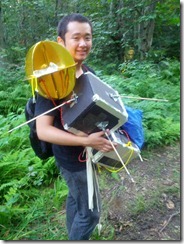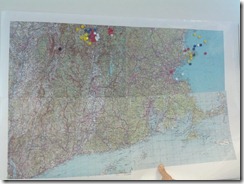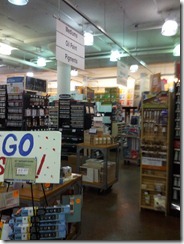I started out today early because I wanted to beat traffic into the city. So I was into the Photonics center at BU around 7:30 am. I happened to check out the map and see that our balloon was still transmitting it’s GPS location, so that was an awesome sign.
We had a follow up interview with Leslie Friday, and she brought with her Syndey (her last name I completely missed), who took photos of us and we talked at great lengths about the Balloon Launch. It was nice to get to talk about the experience so quickly after it happening. We told Leslie and Syndey that we would be retrieving the Balloon during the afternoon and keep them updated.
I then set up a Dropbox Shared Folder so everyone would be able to access each other’s pictures.
We then left for Dover, Vermont, and stopped at the Leominster Home Depot along the way. Nate brought in his fishing pole. We bought a snow roof rake, a saw, some really heavy duty rope, some thinner rope, and hooks.
We went out and used my bow and arrow to try and arc over the payload line. I made it the first shot, and we had tied the fishing line to the arrow so we had a line over that we could pull back with the heavier duty rope. We were at this for a couple of hours, but it was too high in the tree.
We ended up having to cut down the tree. I felt a little guilty, but it would provide opportunities for other types of plants to grow in the space that now allowed the sun to hit the forest floor.
The payload was stuck still in another tree, but we were able to use the roof rake to scoop it down.
We went out for dinner and drinks to celebrate, and looked at the pictures. Amazing. I’m excited to sort through these. Here’s the preview:










